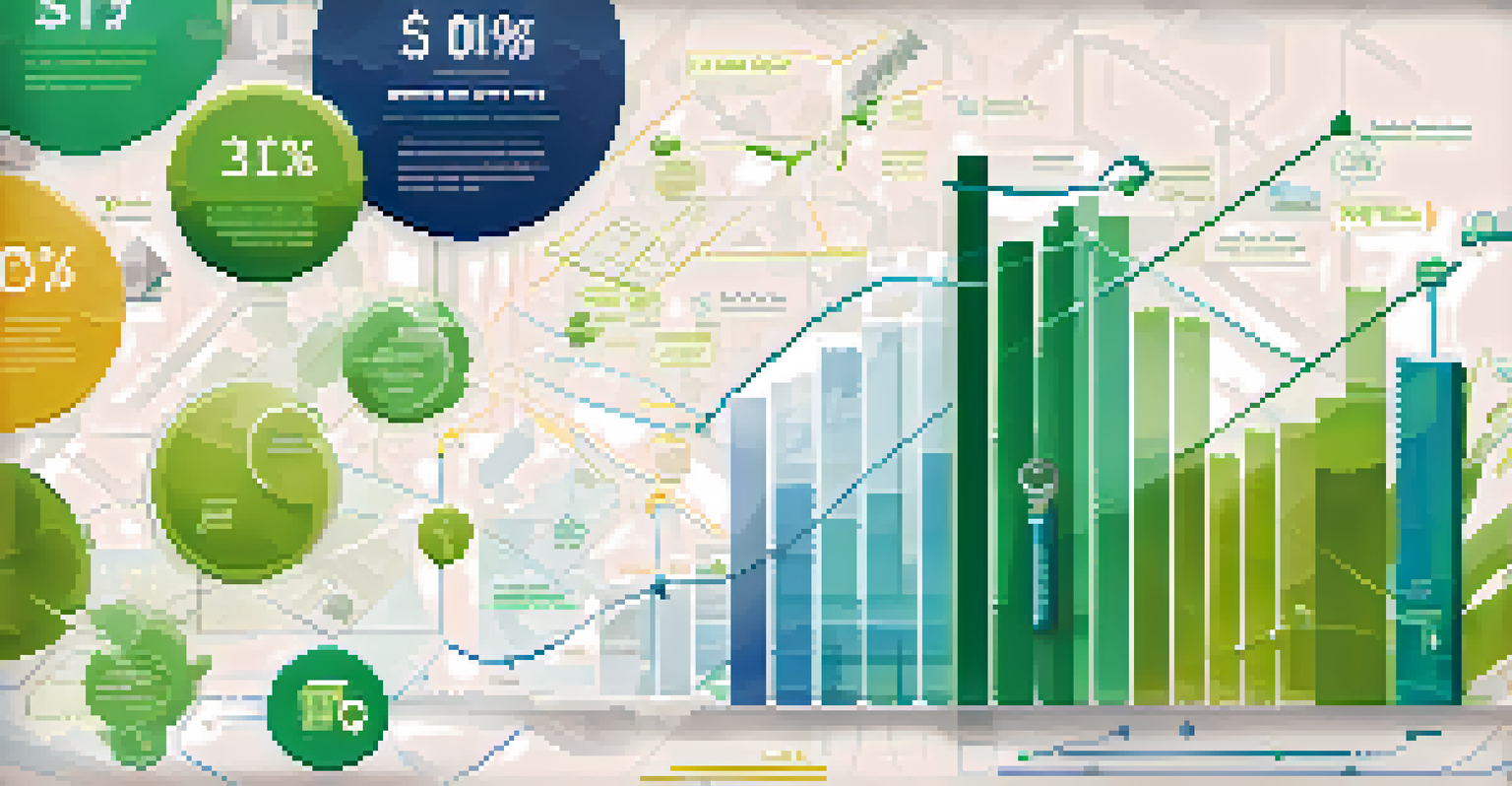How Economic Growth Rates Impact Investment Opportunities

Defining Economic Growth Rates and Their Importance
Economic growth rates represent the increase in a country's output of goods and services over time. Typically measured by GDP (Gross Domestic Product), these rates indicate how well an economy is performing. Understanding these rates is crucial for investors as they reflect the overall health and potential of an economy.
Economic growth is the most powerful instrument for reducing poverty and improving the quality of life in developing countries.
When growth rates are high, it suggests a thriving economy, which can lead to increased consumer spending and business investment. Conversely, low or negative growth rates might signal economic trouble, prompting investors to be cautious. This relationship between growth and investor sentiment underscores the importance of monitoring these rates closely.
In essence, economic growth rates provide a snapshot of a country's economic vitality, guiding investors in making informed decisions. Whether you're interested in stocks, real estate, or other asset classes, these rates can significantly sway your investment strategy.
How Economic Growth Affects Different Sectors
Different sectors respond uniquely to changes in economic growth rates. For instance, during periods of high growth, consumer discretionary goods tend to perform well as people have more disposable income. On the other hand, essential services like utilities may remain stable regardless of economic fluctuations.

Investors often look to sectors that historically yield higher returns during economic expansion, such as technology and consumer goods. By analyzing growth rates, they can identify which sectors are poised for expansion, allowing them to allocate their resources effectively. This sector-specific insight is vital for maximizing investment returns.
Economic Growth Rates Guide Investors
Understanding economic growth rates is essential for investors as they indicate the overall health and potential of an economy.
Understanding how various sectors respond to growth can also help investors mitigate risks. For example, diversifying investments across multiple sectors can provide a buffer during economic downturns, ensuring that not all investments are negatively impacted at once.
The Role of Inflation in Economic Growth and Investments
Inflation, the rate at which prices rise, plays a significant role in the relationship between economic growth and investments. When an economy grows too quickly, it can lead to inflation, which may erode purchasing power and impact investment returns. Investors need to keep an eye on inflation trends alongside growth rates.
In the long run, economic growth is a matter of human creativity and the ability to innovate.
Moderate inflation can indicate a growing economy, but excessive inflation often leads to increased interest rates. Higher interest rates can dampen investment as borrowing becomes more expensive, which in turn can slow down economic growth. This interplay highlights the importance of balancing growth with stable inflation for a healthy investment environment.
Ultimately, understanding how inflation interacts with economic growth can guide investors in making strategic decisions. By factoring in inflation expectations, they can better assess the real returns on their investments, ensuring they are not caught off guard by rising prices.
Global Economic Growth and Its Impact on Investments
In our interconnected world, global economic growth can significantly impact local investment opportunities. When major economies like the U.S. or China experience growth, it often leads to increased demand for exports from other countries. This dynamic can create new markets and investment avenues for savvy investors.
Conversely, sluggish growth in these larger economies can ripple through global markets, affecting commodities, currencies, and even emerging markets. Investors must remain vigilant about global trends and how they influence domestic growth rates. A comprehensive understanding of the global economic landscape is essential for maximizing investment potential.
Inflation's Role in Investment Strategy
Inflation affects investment returns and must be monitored alongside growth rates to make informed decisions.
By keeping an eye on global economic indicators, investors can identify emerging trends and sectors that may benefit from international growth. This global perspective not only broadens investment horizons but also helps in anticipating market shifts.
The Impact of Government Policies on Economic Growth
Government policies, including fiscal and monetary measures, play a crucial role in shaping economic growth rates. For instance, tax cuts or increased government spending can boost consumer confidence and stimulate growth. Conversely, austerity measures may stifle growth and, subsequently, investment opportunities.
Investors need to stay informed about policy changes, as these can create both risks and opportunities. For example, a new infrastructure bill might signal growth in construction and related sectors, prompting investors to allocate funds accordingly. Understanding the policy landscape allows investors to make proactive decisions.
Ultimately, investors who can anticipate the effects of policy changes on growth rates will be better positioned to seize opportunities. This requires a keen awareness of the political climate and the potential economic ramifications of government actions.
Investment Strategies in High vs. Low Growth Environments
Investment strategies can vary significantly depending on whether the economy is in a high or low growth phase. In a high-growth environment, investors might lean towards aggressive strategies, seeking high-risk, high-reward opportunities like startups or tech stocks. This approach capitalizes on the upward momentum of a thriving economy.
In contrast, during low-growth periods, investors may prioritize capital preservation and stability. This often leads to a focus on dividend-paying stocks, bonds, or other safer investments that can provide steady returns despite a sluggish economy. Adjusting strategies according to growth rates is essential for long-term success.
Global Trends Impact Local Investments
Global economic growth influences local investment opportunities, making it crucial for investors to stay aware of international trends.
Understanding when to shift investment strategies based on economic growth can lead to better financial outcomes. By aligning investment choices with current economic conditions, investors can enhance their portfolios and navigate market fluctuations more effectively.
The Future of Economic Growth and Investment Opportunities
As we look to the future, understanding the trends in economic growth will be vital for identifying new investment opportunities. Factors such as technological advancements, demographic shifts, and sustainability initiatives will shape growth rates in the coming years. Investors who can adapt to these changes will have a competitive edge.
Emerging markets, in particular, offer exciting potential as they often experience higher growth rates compared to developed economies. By exploring these regions, investors can uncover unique opportunities that may not be available domestically. However, it's essential to conduct thorough research and understand the specific risks involved.

In conclusion, the relationship between economic growth rates and investment opportunities is ever-evolving. Staying informed and adaptable will enable investors to navigate this complex landscape and make strategic decisions that align with future growth trends.